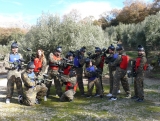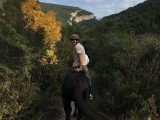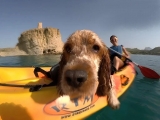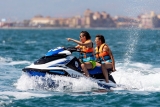The Red Sea is the perfect setting for those seeking new and thrilling adventures, such as scuba diving, to experience it in the best way possible. Nestled between Africa and Asia, these waters are breathtaking, stretching over 2,000 km in length and 300 km in width, teeming with countless species of marine life.

You can find travel deals, but it’s highly recommended to go with a specialist guide familiar with the area, as understanding water currents and other details is essential. It’s undoubtedly one of the top destinations for those who’ve already tried diving or hold relevant diving certifications. The volcanic activity of its seabed and the indescribable currents (which even counteract tides) make this sea a specialist in hosting the most diverse species.
Another recommendation is to bring a good camera or hire a skilled underwater photographer, as immortalising moments shared with angelfish, surgeonfish, octopuses, black corals, gorgonians, or turtles will make the experience truly unforgettable.

Beyond Dahab, you’ll find numerous dive sites, depending on the diving company you choose. Must-visit spots include Zabargad, Brothers, Hurghada, Sharm El Sheikh... At Gubal Island, marvel at the wrecks of the Rosalie Moller and the Thistlegorm, sunk since 1941; be amazed by St John’s reefs; explore the trails of ten shipwrecks...
In recent decades, the Red Sea has become the dream destination for divers worldwide. However, it’s vital to respect and protect its marine life—otherwise, what we see today may not exist tomorrow. Conservation efforts, such as the creation of underwater parks like Ras Mohammad in the Sinai Peninsula, are now in place.

Key rules to follow when diving here include: not feeding wildlife, taking nothing as souvenirs, avoiding coral damage or littering, not disturbing marine species, and respecting wreck artefacts—in short, practising sustainable diving.











